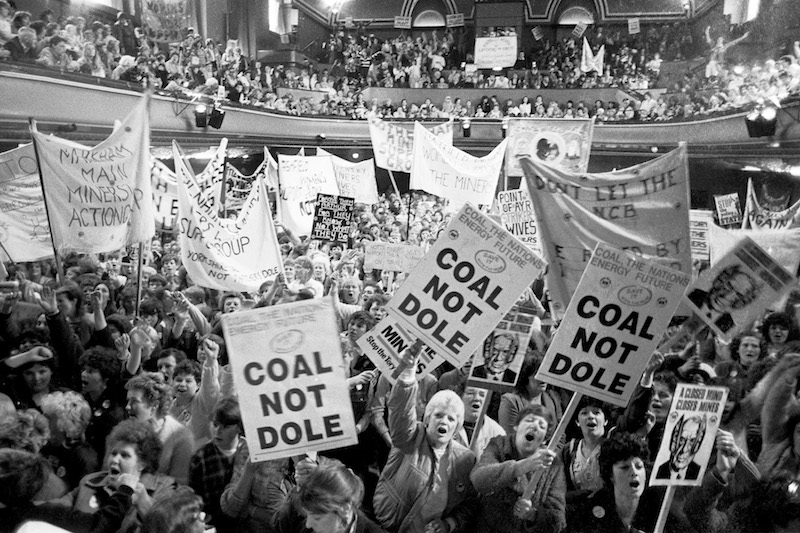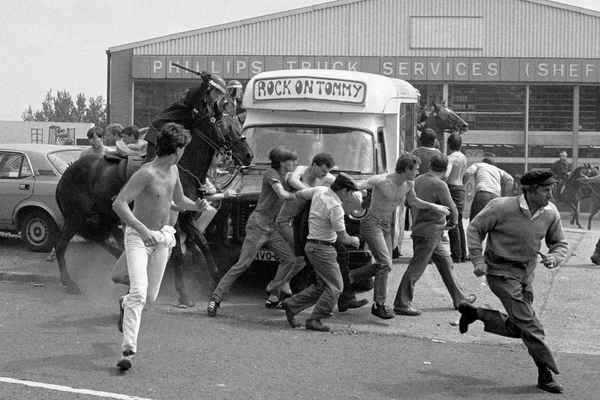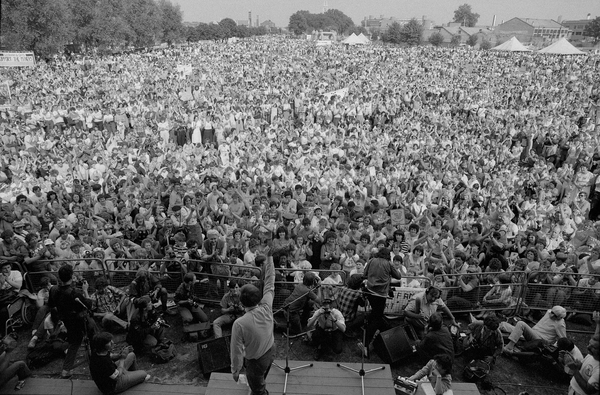
30th anniversary of the great coal strike of 1984/5
Images of the Past.
The Miners’ Strike.
Martin Jenkinson, Mark Metcalf, Mark Harvey.
Pen and Sword Books Limited
Isbn 978 1 78346 366 4
£14-99
To mark the 30th anniversary of the great strike at least four new books have hit the shelves (Milne’s republication of The Enemies Within seems to be simply an attempt to capture the renewed interest in the subject rather than adding anything new, or revising any of his myopic views of Arthur Scargill). The first of these Images of the past The Miners’ Strike, essentially a photographic collection. A picture speaks a thousand words and Martin Jenkinson’s probably a lot more, so mere verbal description will never characterise the magnificence and strength of his work. The book and many exhibitions of photo’s which accompany its launch has as well illustrated many of the big miners commemorations was put together by Justine his daughter and wife Edwina in tribute to him. Helping to present and edit the work, adding his artistic photo professionalism is Mark Harvey, manager of iDS Photography with 20 years’ experience in labour movement, trade union and documentary photography.

Martin Jenkinson’s formal union role was as the official photo journalist for The Miner and Yorkshire Miner, but his wider role as a radical freelance photographer for the labour movement at large was almost unparalleled. An active trade unionist in his own right and member of NUJ NEC. He covered protests, and demonstrations, conferences and strikes, and all and every platform where the working class in its multiple aspects made its political voice heard. He built up over the year’s a massive collection, a photo library which lets in the light of actual image to dry texts of labour movement and trade union history, even vibrant texts of struggle and hope. Ever prepared to loan his work for articles and news, he used to bollock me chronic as these photos gradually were absorbed into my own collections and albums only to emerge years later uncredited or at times credited to me!

One thing was certain, with the exception of the photo journalists from News Line, Martin’s lens would be almost alone shooting from within our ranks and not from police lines and angles. He was in the thick of the 84/5 strike where the fighting raged and his life was in serious jeopardy. The bulk of this work deals with the scenes from the picket lines, the occupied villages, the food halls, the families and the communities through that bitter twelve months. Martin uses striking black and white images; close up, personal, and deeply moving. They are monuments to his art and his commitment to the working class.

Accompanying the collection is a strong historical and political narrative of the strike by Mark Metcalf. The down side in a book of this nature is it comes without sources and footnotes, not the authors choice but those of the publishers whose topical history genre requires ‘easy reading’ styles. Mark has greatly benefited in his work by the critical reviews of earlier books that tripped themselves up with basic mistakes and in the case of some academic and journalist works just complete factual inaccuracies. Mark makes only one, worthy of mention. Around the vexed subject of Orgreave, not so much the vindictive murderous assault by the police, but the cause of the debacle. Mark says the steel workers at Scunthorpe wanted coke to produce steel and when this was refused went unilaterally to get it through the picket lines. This is not true and at the time their request for union authorised union delivered and union sanctioned coke, was to stop the linings of the vast furnaces collapsing and wiping out the plant. The quid pro qou was that they didn’t produce steel and since the start of the strike hadn’t done so. It was only when Arthur turned them down, having decided more or less unilaterally to stop all such safety exemptions that Sirs got his long term wish in having ISTC members adopt a ‘fuck em’ attitude and abandon the no steel policy, running their lorries through our lines at Orgreave and into scab history. This is a small but fundamental mistake which in no way takes away from the otherwise solid presentation of the facts and inspirational collection of photos. This is a great tribute to Martin and his work, and a monument to the militant working class themes he presented.
David Douglass